Children’s television wasn’t always the 24-hour in-your-face riot of cartoons and noise that it is nowadays. You had to wait until the channel schedulers graciously declared you were allowed to watch something suitable – and if you didn’t like what they were showing, tough. That was it, until the next time.
If you had a visual or hearing impairment then the options for you on the TV were even smaller. The BBC had a once-a-month offering for hearing impaired children called For the Deaf which was a deliberately leisurely programme, giving the watching audience time to read the subtitles provided.
Ursula Eason (the assistant head of the BBC’s Children’s Television from 1955-70 and the person responsible for bringing the surreal The Magic Roundabout to our screens in the format we all know and love) was hearing impaired herself and became somewhat of a pioneer of programmes for similarly affected children in the 1950s and ‘60s.
She and Patrick Dowling (another BBC producer, of such series as The Adventure Game and Why Don’t You?) looked at the results of recent surveys that found that, actually, children with hearing impairments loved dynamic programmes like Top of the Pops and could hear a lot of the lower frequency notes that were played. They used this information to create Vision On: a show ‘intended mainly – but not exclusively – for deaf children’. It would, hopefully, reflect the social integration between the hearing and the hearing impaired.
The name came from the lit up sign that was common to all television studios. ‘Vision on’ was an indicator to everybody that the cameras were rolling. A second sign – ‘Sound on’ – would normally accompany it but for this particular programme’s titles, only the first was used. The logo for the programme was great – the handwritten words ‘Vision On’, with a reflection, turned vertically upwards and given eyes. The overall effect was of an insect, with the ‘O’s of ‘On’ making the eyes, the ‘n’s the antennae and the ‘V’s the springy legs.
The first series began in March 1964, with Pat Keysell as the presenter. Pat was an actress and a mime teacher who taught hearing impaired children and had also once been the PA to Eason. Alongside her were an assortment of jugglers, mime artists and magicians.
Communication was kept largely visual, with spoken dialogue kept to a minimum so there wasn’t a need for lots of changing close-up shots for lip readers before moving further back so that sign language could be seen. Music was played to fill in the spaces where conversation wasn’t. In this first run, hearing impaired children put on plays in the studio, quizzes, mimed stories, short films and amusing animations. Many of these animations came from Europe but as the show moved on more were commissioned from people such as Oliver Postgate (The Clangers, Ivor the Engine, Bagpuss) and a team who would go on to be involved in the Wallace & Gromit films. There were also short interludes from The Prof (David Cleveland), an excitable man who participated in silent, farcical skits.
Friend to Morph Tony Hart (Take Hart, Heartbeat) joined the presenting team for series two onwards and under his calm artistic ability thousands of viewers started sending in their creative designs to be featured on the programme’s ‘The Gallery’. It was Keysell, however, who spoke the now infamous phrase: ‘I’m sorry we can’t return any of your pictures but we give a small prize to those that we do show.’ (There was no mention of what the prize was though…)
The slow camera pan over the drawings, accompanied by the very recognisable music, ‘Left Bank Two’ played by The Noveltones, was incredibly soothing; I personally think that giving your bills and bank statements the same treatment would help make even them slightly more digestable.
Adding to the illustrious cast over the years were mime artists Ben Benison and ‘Sylveste’ McCoy (later to add an ‘r’ to the end of his name and regenerate into Dr Who), and eccentric inventor Wilf Lunn. Also on board came producer Clive Doig, a man now rather better known for his work on many other children’s programmes, including Johnny Ball Reveals All (in today’s climate this now seems like quite an alarming title), Eureka (also featuring Wilf Lunn) and Jigsaw.
This latter programme was an imaginative kids’ puzzle show which ran on the BBC from 1979 until 1984. It featured some of the Vision On cast, including Lunn, Cleveland and McCoy and adding Janet Ellis (Blue Peter) and the quite frankly terrifying Mr NoseyBonk.
As well as all the features already mentioned, there were several other recurring characters that added to the amusement. Among others, we were introduced to: The Burbles, who lived inside a clock and communicated via speech bubbles. The cartoon ‘The Digger’ used a spade on a building site to find interesting things and Humphrey the Tortoise delighted in making jokes in a written format, sometimes to himself and sometimes to a companion.
The whole tone for Vision On was set at ‘entertainment’ rather than ‘education’ – and the humour ranged from a bit daft to completely bonkers. It was fast-moving and amusing and had a devoted following for the 12 years it was on the air.
It won several awards for its dedication to hearing impaired children, including a BAFTA prize for specialised programmes and one from Pix Jeunesse, an international organisation for ‘promoting excellence in children’s TV’. It got shown around the world, including France, the U.S., New Zealand and Australia.
Series 15 aired from February to May 1976, after which it was felt that the format had been exhausted and was retired from the television. Patrick Dowling and Tony Hart continued to make art-based children’s shows, which still retained an air of the ridiculous (particularly where Morph and Chas were concerned), with The Gallery accompanying them on both Take Hart and Heartbeat.
Vision On fulfilled its brief really well: it managed to make a programme for hearing impaired children fun, interesting and totally mainstream, something that hadn’t been achieved before.





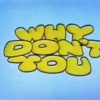
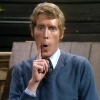
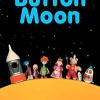
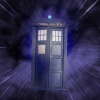
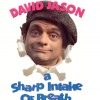
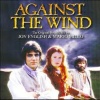
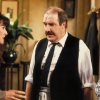
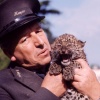
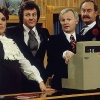
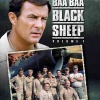
Do You Remember Vision On?
Do You Remember Vision On?